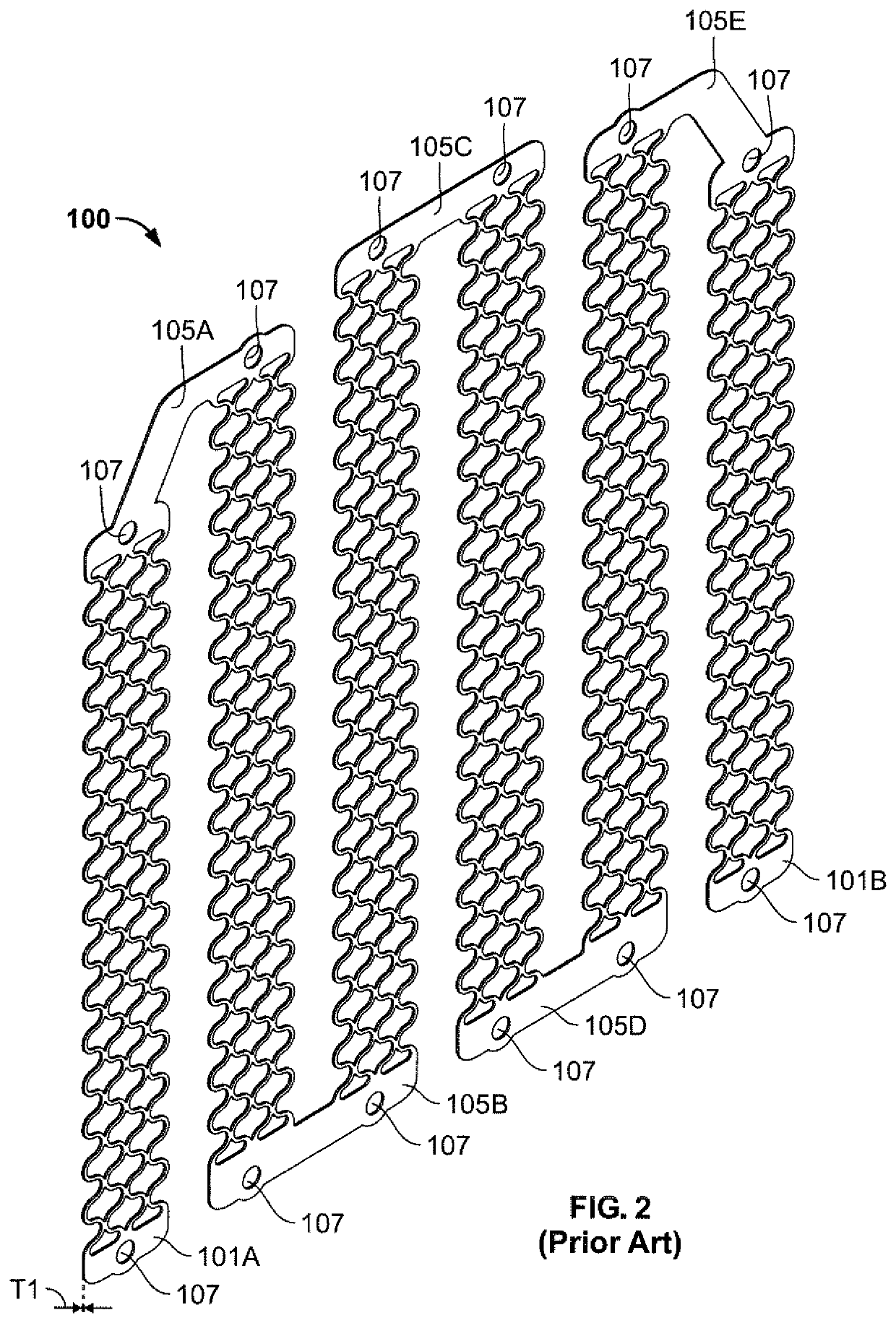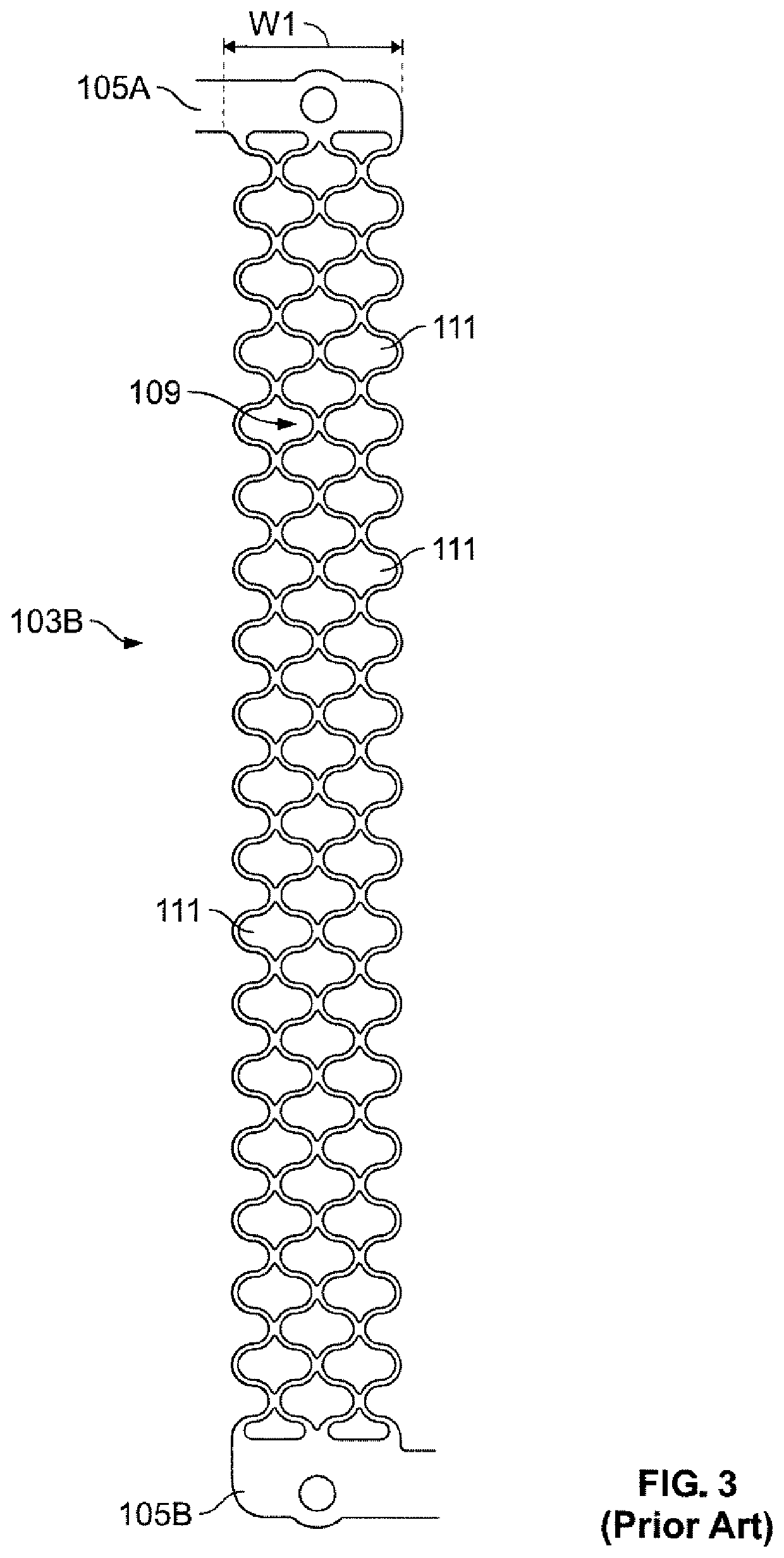Heating element and method of use
a heating element and heat sink technology, applied in the field of heat sinks and methods of use, can solve the problems of reducing the amount of current that can flow, reducing the conductivity, and a potential failure of the joints in the heating element,
- Summary
- Abstract
- Description
- Claims
- Application Information
AI Technical Summary
Benefits of technology
Problems solved by technology
Method used
Image
Examples
Embodiment Construction
[0079]A number of different heating element designs are provided below that provide improvements over heating element designs such as depicted in FIGS. 1-4 above.
[0080]FIG. 5 shows one embodiment of the inventive heating element, which is designated by the reference numeral 200. The heating element 200 has terminals 201A and 201B, heating element segments 203A-F, and busses 205A-205E.
[0081]The terminals 201A and 201B are custom configured as compared to the terminals 101A and 101B of FIG. 1. That is, each terminal 201A, 201B, includes a fastener 207, that is secured to a backing plate 209. The terminals also include a connector 211, which is designed to connect to wiring for power or another heating element.
[0082]One difference between the heating element 200 in FIG. 5 and that of FIG. 1 is that the lengths of the segments are all the same. With this similarity in length, the busses 205A-205E are the same and do not require any bent portions or elbows as is the case for the heating ...
PUM
 Login to View More
Login to View More Abstract
Description
Claims
Application Information
 Login to View More
Login to View More - R&D
- Intellectual Property
- Life Sciences
- Materials
- Tech Scout
- Unparalleled Data Quality
- Higher Quality Content
- 60% Fewer Hallucinations
Browse by: Latest US Patents, China's latest patents, Technical Efficacy Thesaurus, Application Domain, Technology Topic, Popular Technical Reports.
© 2025 PatSnap. All rights reserved.Legal|Privacy policy|Modern Slavery Act Transparency Statement|Sitemap|About US| Contact US: help@patsnap.com



